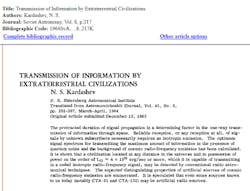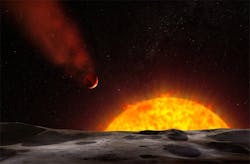The recent return to television of The X-Files spurred me to revisit some news stories that I had compiled over the past year related to the search for extraterrestrial intelligence. Whether or not you like the show or believe in aliens, you may be surprised at just how much legitimate research on the alien/UFO phenomenon is being undertaken using photonics-related technology.
Earlier this month, Laser Focus World placed several caveats on a news story entitled "Laser cloak could hide Earth from extraterrestrial beings"; that is, while we found many potential scientific flaws with the methods that were being used to potentially cloak the Earth, the very fact that a scientist would even consider undertaking such a monumental task is downright fascinating to me. His idea is to use a powerful laser to compensate for the intensity "dip" that we observe when a planet traverses the sun. Sadly, the desire to cloak the Earth is in response to a widely shared societal fear that aliens may want to use our Earth for unsavory purposes (as fictionalized in the movie Mars Attacks!—see clip below) and extinguish our species just as generations of colonists extinguished native peoples.
And yet, even Stephen Hawking is willing to take the risk of possible annihilation and support the search for extraterrestrials by announcing an initiative called Breakthrough Listen—a $100 million dollar, ten-year search for intelligent life in the universe. As with the Earth cloak, lasers figure heavily into the research tool set for this Breakthrough Listen project, as explained in the news posting: "The project will also enlist the aid of the Automated Planet Finder Telescope at Lick Observatory in California to search for laser transmissions, using techniques 1,000 times more effective than previous efforts to detect interstellar laser signals, according to a statement from the researchers. From a 'nearby' star 25 trillion miles (40 trillion kilometers) away, it could detect a 100-watt laser emitting the same amount of energy as a normal household light bulb, the statement added."
Is it so crazy to think that life possibly originated in and can travel through the voids of space? Recent research indicates that RNA could form in outer space. And if life is indeed out there, scientists have postulated since the 1960s that advanced civilizations could be detected through their infrared or heat-waste emission signatures; see one such publication below:
Perhaps the largest effort to find extraterrestrial civilizations is through exoplanet research that seeks to find potential habitable planets circling nearby stars through powerful telescopes, spectrographs (see http://exoplanets.astro.yale.edu/), frequency combs, and photonic image-processing techniques. To date, http://exoplanet.eu and other databases log more than 2000 exoplanets. Each exoplanet is so well understood in terms of its physical relationship to its parent star that graphical illustrations are produced for various exoplanets; for example, this illustration shows exoplanet HD 209458b which is orbiting so close to its star that powerful stellar winds are stripping its atmosphere into space, creating a comet-like tail:
To borrow a phrase from The X-Files, "The truth is out there", and I for one find it refreshing that the scientific community is finally applying real scientific tools to what should be considered one of the most amazing quests of the human race: answering the question "Are we alone?"




